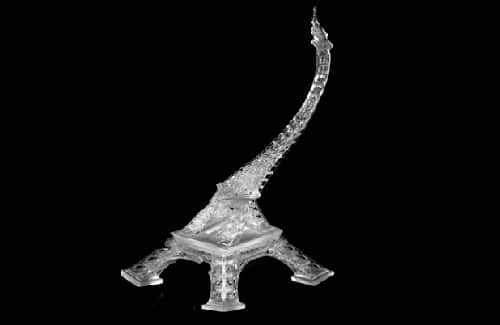Besides precision, the technique offers freedom via a robotic arm to control each layer during the designing stage

Conventional 3D printing processes rely on replicating a digital design model that is sliced into layers with the layers printed and assembled upwards like a cake.
Now, a remarkable technique devised by engineers at the Northwestern University demonstrates the ability of light to improve 3D printing speed and precision. In combination with a high-precision robot arm, there is more freedom to move, rotate or dilate each layer as the structure is being built.
The method manipulates the original design layer by layer and pivots the printing rintingdirection without recreating the model. This “on-the-fly” feature enables the printing of more complicated structures and significantly improves manufacturing flexibility.
This light enabled 3D printing technique has several applications, including 3D printing a customised vascular stent and printing a soft pneumatic gripper made of two different materials, one hard and one soft. A double helix and a tiny Eiffel Tower are two other printed examples in the study.
The process uses a robotic arm and a liquid photopolymer that is activated by light. Sophisticated 3D structures are pulled out from a bath of liquid resin by a high-precision robot with enhanced geometric complexity, efficiency and quality compared to the traditional printing process. The arm is used to change the printing direction dynamically.
“The 3D printing process is no longer a way to merely make a replica of the designed model,” said Cheng Sun, associate professor of mechanical engineering at the McCormick School of Engineering. “Now we have a dynamic process that uses light to assemble all the layers but with a high degree of freedom to move each layer along the way.”
He further added that by shining light on the liquid polymer causes a crosslinking or polymerisation process, converting the liquid to a solid. This contributes to the speed and precision of 3D printing.
The continuous printing process can print 4,000 layers in approximately two minutes.
“This is a very fast process, and there is no interruption between layers,” Sun said. “We hope the manufacturing industry will find benefit in it. The general printing method is compatible with a wide range of materials.”
Looking to the future, Sun said this printing process could be applied to other additives as well as traditional subtractive manufacturing processes, providing a bridge toward a truly hybrid process.
The research has been published in the paper titled Conformal Geometry and Multimaterial Additive Manufacturing through Freeform Transformation of Building Layers.










